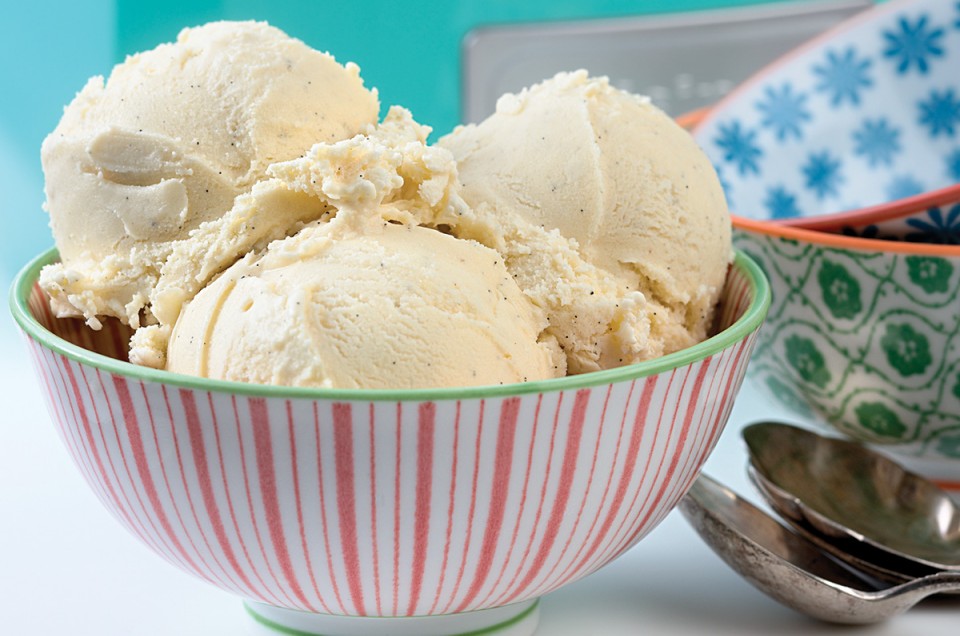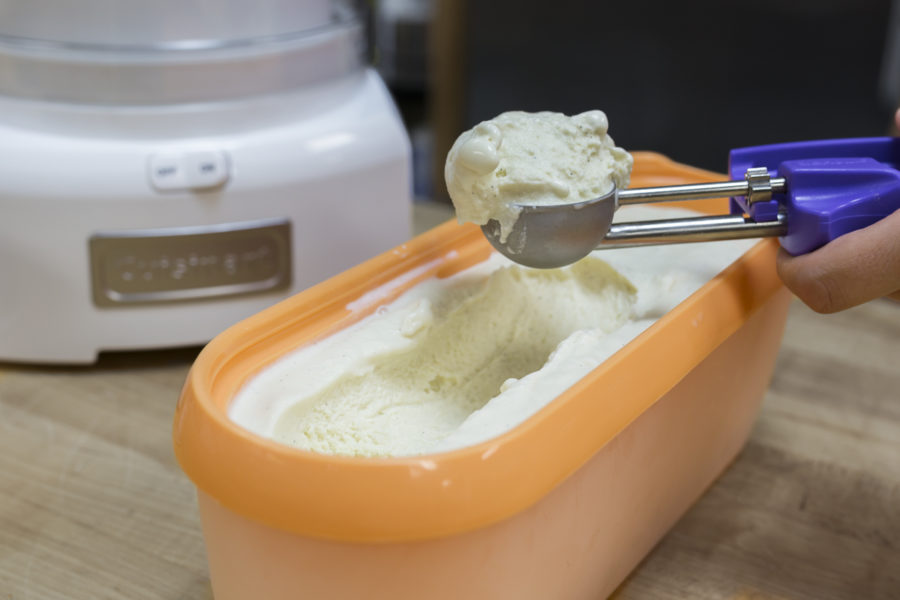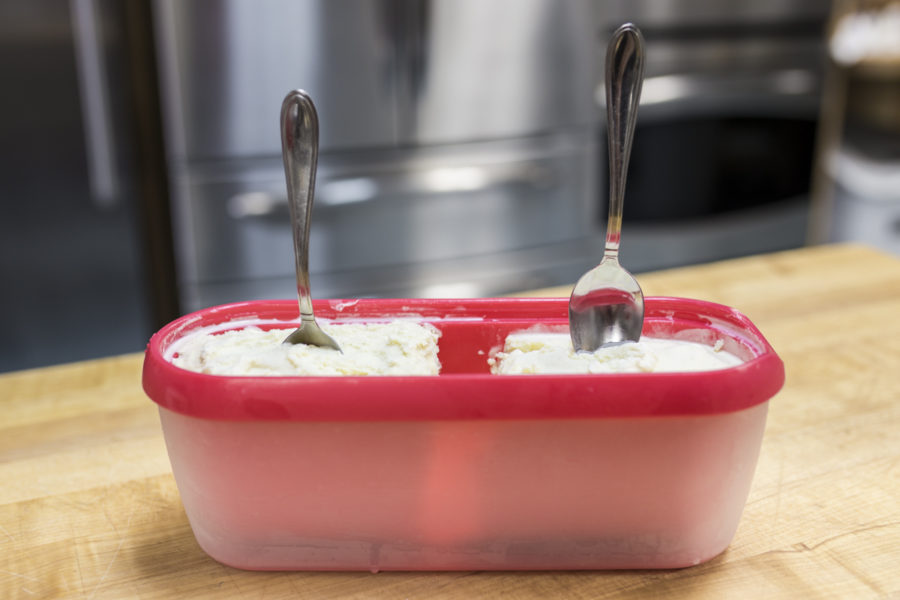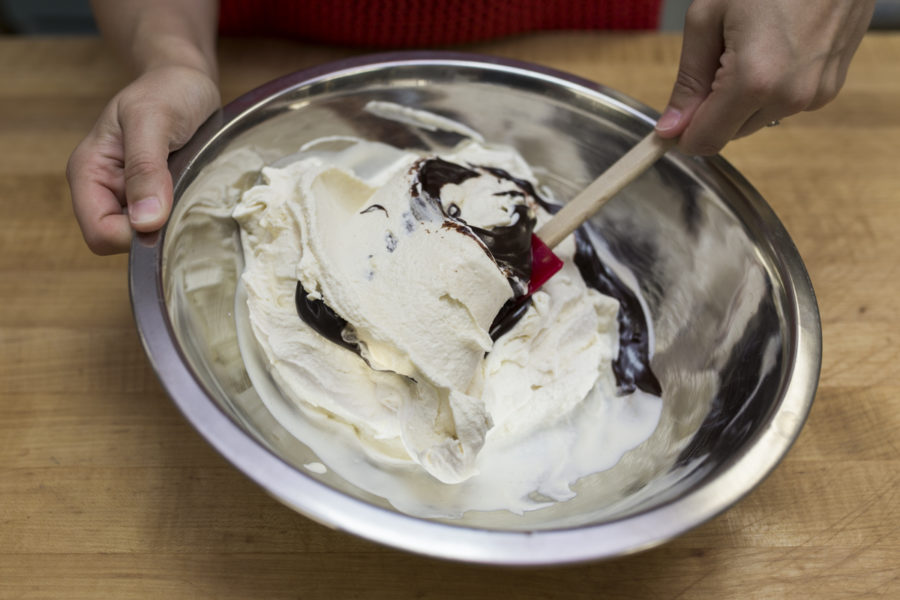


I’m sure this isn’t news to anyone who clicked on this blog, but...
It’s ice cream season!
Homemade ice cream is something that everyone should experience at least once in their life. Because you only have to make it once to know that it's something worth making again and again.
It's that time of year when it’s socially acceptable to enjoy ice cream as dinner on those particularly hot days. It's the season when kids run around with sticky faces and hands after an indulgent afternoon treat; a lot of memories are made at the hands of this frozen, creamy delight.
You can easily make ice cream with just two basic ingredients – cream and sugar – but we've got some tips to show you how to make it the very best it can be.
For all of the tips below, we're going the modern route and using an ice cream maker. While it's true that ice cream can be made without a machine (by hand or in an old fashioned churn), we're all about the ease of this modern convenience.
Cuisinart's 1.5-quart ice cream maker is a fixture in our hectic test kitchen. Simply add the ingredients, push a button, walk away, and come back less than 30 minutes later to find wonderfully creamy, perfectly frozen ice cream.
Egg yolks add richness from the fat in the yolk, which gives the ice cream a smooth, velvety texture that cream alone just won't produce. Ice cream can be made without egg yolks, but it will be a bit stiffer and certainly less smooth on your tongue – thereby lacking what most folks expect from their favorite dessert.
Egg yolks also act as an emulsifier: The proteins in the yolk bind with water and fat molecules in the milk, which results in a more stable and creamy end product. The process of cooking the milk and eggs together to a safe temperature will produce a rich custard base that will translate to more luscious ice cream.
Be careful to temper your egg mixture before adding it to the hot milk base to avoid curdling. Tempering is the process of adding hot liquids to eggs without them cooking or curdling. The trick for that is to add a very small amount of the hot liquid to the eggs at a time, while continuously whisking or stirring. This allows the eggs to gradually warm up, so they will thicken into custard, instead of curdling into scrambled eggs. Making a custard base is a relatively simple step that makes a big difference in your homemade ice cream.
Your custard base should be cooked to a safe temperature of 170° to 180°, and will be as thick as heavy cream.
If you don’t have a thermometer handy, a good way to know you've reached the right temperature is with the spoon test. Dip a spoon into your cooked milk. If the base leaves a coating that you can swipe clean with a finger, it’s good to go.
Your freezer is a wonderful thing, but sometimes it does its job too well and freezes the flavor right out of your food – or at least dulls it.
To ensure your ice cream tastes as good many days later as it did when it just came out of the machine, add a little extra insurance in the form of a touch more flavor. Adding a bit more extract or flavor to the machine while it's churning, or even beforehand, seems like a pretty obvious thing... you know, now that you've read it.
If you're adding extracts, plan to add up to 1 tablespoon more, depending on how much you like the flavor. We wanted our vanilla to POP, so we went all in. If you're using an extra-strong flavor, use a bit more discretion. Since these flavors are so super concentrated, adding no more than 1/2 teaspoon extra to your ice cream will get you where you want to go.

Adding a thickener like xanthan gum can help make your ice cream creamier and help reduce the amount of ice crystals that form during the freezing process. Xanthan gum is often used as a thickening agent and a stabilizer to prevent separation, which is how it reduces the ice crystal formation in your freezing ice cream and keeps the texture smooth.
The fat and protein in the egg yolks will do much the same – so for those that can't eat eggs, this is a must-add. For everyone else, xanthan gum is a tiny little insurance policy that goes a long way towards homemade ice cream perfection.

Most homemade ice cream becomes rock hard when stored in the freezer longer than 6 hours or so. To keep ice cream hard but not rock hard, stir in 1 to 2 tablespoons liquor before placing in the freezer. Use vodka, brandy, or match a liqueur to your ice cream flavor: Kahlua and Frangelico are two of my favorites.
So how does this happen? Since alcohol doesn't freeze, the alcohol in the liquor acts as a sort of anti-freeze, keeping your ice cream from turning rock hard. It's still going to be hard-serve – but you'll be able to scoop it much more easily.
Looking to take your plain ice cream over the top? There's nothing better than a mouthful of cookie in the midst of all that frozen goodness. Whether it's cookies, candies, pretzels, chopped fruit, or even potato chips, you can customize your homemade ice cream easily with the help of an add-in.
The easiest way to mix add-ins into your ice cream? Just pop them into the canister while the machine's still running, at the end of the cycle when it's reached the desirable soft-serve stage. Your goodies will be easily mixed in with the help of the machine's paddle.
 For more delicate add-ins, like fudge or caramel for a swirl, it's better to scoop the ice cream into a bowl and gently fold the sauce in with a spoon or spatula.You have a better shot of controlling how blended your swirl becomes. Adding sauce directly to the machine will run the risk of it blending in completely.
For more delicate add-ins, like fudge or caramel for a swirl, it's better to scoop the ice cream into a bowl and gently fold the sauce in with a spoon or spatula.You have a better shot of controlling how blended your swirl becomes. Adding sauce directly to the machine will run the risk of it blending in completely.
Feeling totally inspired by all of these tips – but can't eat dairy? You're in luck – dairy-free ice cream is DELICIOUS, and so totally easy. Check out this fantastic post by my fellow blogger, Alyssa, for tips and tricks that ensure everyone enjoys a frosty treat this summer.
Tell us, what's your favorite ice cream flavor? What are your favorite add-ins to throw into your homemade ice cream? Share in the comments below!